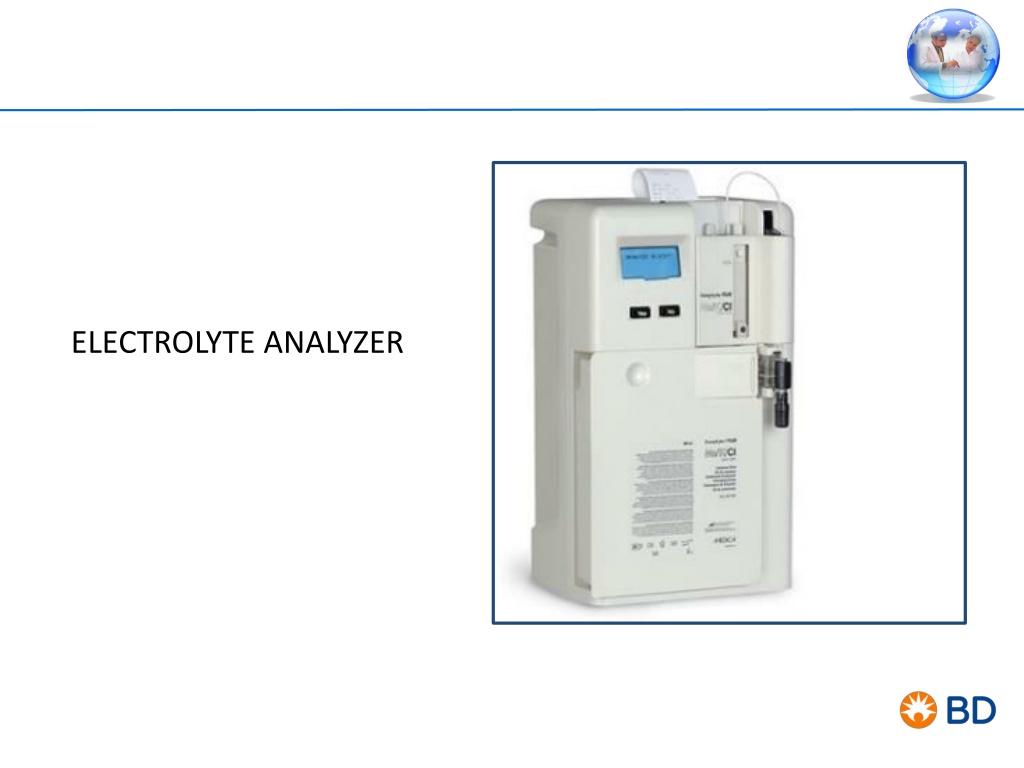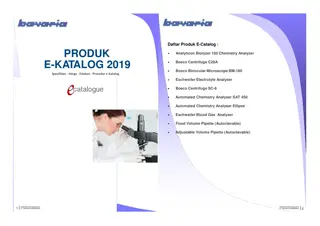Understanding Electrolyte Analyzers in Medical Settings
Electrolyte analyzers play a crucial role in monitoring electrolyte levels for patients in various medical scenarios, including emergency departments, ICU admissions, and those with liver and kidney disorders. This technology utilizes Flame Emission Photometry and Ion Selective Electrode (ISE) technology, including Direct and Indirect ISE methods, to measure electrolyte concentrations. Regular maintenance and calibration are essential for accurate and reliable performance of these analyzers.
Download Presentation

Please find below an Image/Link to download the presentation.
The content on the website is provided AS IS for your information and personal use only. It may not be sold, licensed, or shared on other websites without obtaining consent from the author. Download presentation by click this link. If you encounter any issues during the download, it is possible that the publisher has removed the file from their server.
E N D
Presentation Transcript
ELECTROLYTE ANALYZER : Purpose : Electrolyte values are critical parameters especially for patients who present to the emergency department, for patients receiving fluid therapy, for patients admitted to intensive care units (ICU) and for patients who suffer from liver and kidney disorders. Types and Principles : Flame Emission Photometry. Ion Selective Electrode (ISE) Technology : >> Direct ISE >> Indirect ISE
Flame Emission Photometry: In case of flame photometry, a sample diluted with a known concentration of a reference ion is aerosolized and passed through a flame, which excites the cations. They re-emit the energy as light of different frequencies; the amplitude of this emission is proportional to the ion concentration in the sample. Figure 6: Schematic Representation of the Flame Photometer & Sample Flame photometer
Ion Selective Electrode (ISE) Technology : Direct ISE : Direct ISE actually measures the electrolyte activity in the plasma water rather than concentration in plasma. The electrochemical activity of the ions in the water is converted to the readout concentration by a fixed (ion-specific) multiplier. The use of this fixed factor ensures that direct ISE reflects the actual, clinically relevant activity, irrespective of the level of proteins and/or lipids. This technology is typically used in POC electrolyte analyzers, and these may be placed both in the laboratory and in a point-of-care environment. The reported result is independent of the content of solids in the sample.
Ion Selective Electrode (ISE) Technology : Indirect ISE : Measures on a total plasma sample (or serum) that has been diluted with a large volume of diluent. Requires that the plasma and erythrocytes are separated by centrifugation. Due to the dilution, this method measures the mean concentration in plasma. The concentration is calculated by multiplying the result with the dilution factor. Figure 7: ISE measurement system
ELECTROLYTE ANALYZER : Maintenance : To ensure proper performance of the analyzer, regular conditioning and cleaning the reference electrode housing is required periodically as per manufacturer instructions. Please refer to manufacturer s instructions for specific preventive maintenance details. Calibration : In many electrolyte analyzers, a 2 point calibration is automatically done every few hours and one point calibration is done with every measurement. In these analyzers, an automatic calibration also happens after Power ON or Reset. If calibration acceptance criteria are defined by the manufacturer, this should monitored for all parameters on a daily basis.























